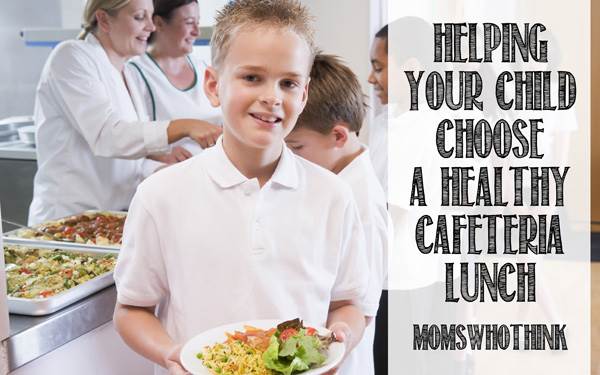

How to Encourage Your Child to Pick A Healthy Cafeteria Lunch
As concerns about childhood obesity become more and more prevalent in the United States, we have become more and more critical of our children's food choices. We can make the effort to control our children's diet from an early age, but that only works for so long. Sooner or later, our children will begin to make their own decisions about their diet and the foods that they eat.
Nowhere is this more apparent than when our children are at school. School lunches, be they sack lunches or cafeteria lunches, are a serious point of contention when it comes to teaching your child to eat right. Whichever way you choose to go, you have to worry about whether or not your child will eat the food that is best for them.
Nutrition Education for School Lunches
The best way to cope with your concerns is to make proper nutrition a regular part of your lives at home. It should be both a topic of conversation and a regularly modeled behavior. Schools are providing healthier lunch options, especially since they have to meet federal regulations regarding nutritional content, but children are still free to pick and choose among the food offerings to create their own meal.
Once you give your child the money to buy their lunch, you cannot control whether they buy a candy bar and a sugary soda or a sandwich and an apple. If you do not take the time to educate your child about good nutrition practices, then they will never learn to use those practices in their own lives.
Schools do provide some education on nutrition, but whether this is absorbed by your child or goes in one ear and out the other will vary from child to child. Most children cannot resist the temptation of ice cream or pizza versus eating healthy. You'll need to reinforce and build upon what your child learns about nutrition in school.
Pick Your Battles
Once you have made sure that you are modeling proper food eating habits and have educated your child about the fundamentals of good dietary choices, it is important to give them a chance to put their new knowledge to work. The easiest way to do this is to pack a lunch or plan a meal with your child's help. Let your child be an active part of the planning process, while providing them with appropriate options.
Asking if your child would like carrots or broccoli for dinner is a lot different than suggesting they pick between marshmallows and green beans. This will give your child a chance to put the concepts of nutrition into practice under your guidance.
School Cafeteria Lunches
Finally, if you must choose cafeteria lunches over packed lunches, be sure that your child knows how to navigate the menu. School lunch offerings must comply with federal rulings on nutrition, but your child will have the last word on what they choose to eat off the tray. Teach your child to avoid a la carte options that tend to be lower in nutritional value and instead focus their attention on the salad bar.
Remind them to make sure that they are eating all of the necessary food groups in their meal and encourage them to stay away from vending machines. And whatever you do, do not turn unwanted food choices into forbidden fruits. The occasional slip won't harm your child, but the dogged pursuit of foods they can't have might.
Kids will be kids and you won't find much success if you try to keep your child away from any and all junk food. If you completely forbid candy and pizza, your child will only be tempted to rebel against you by selecting these food items. Or, you'll unintentionally cause your child to develop an unhealthy relationship with food, where they see junk food as an enemy rather than something to eat in moderation.
Trying to encourage your child to eat a balanced meal rather than to avoid junk food entirely is key. By guiding them right and helping them to understand the importance of veggies and fruit, you'll be able to ensure they grab an apple in addition to that slice of pizza. Teaching moderation is good, too; while a bottle of soda once a week won't hurt, drinking soda every day isn't a great idea.